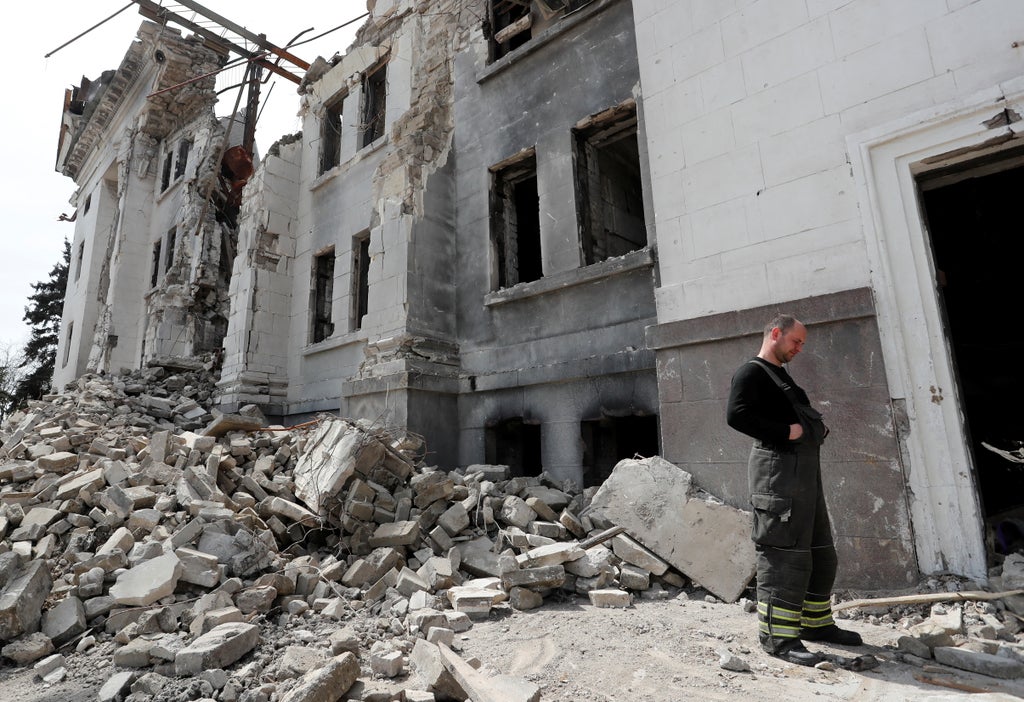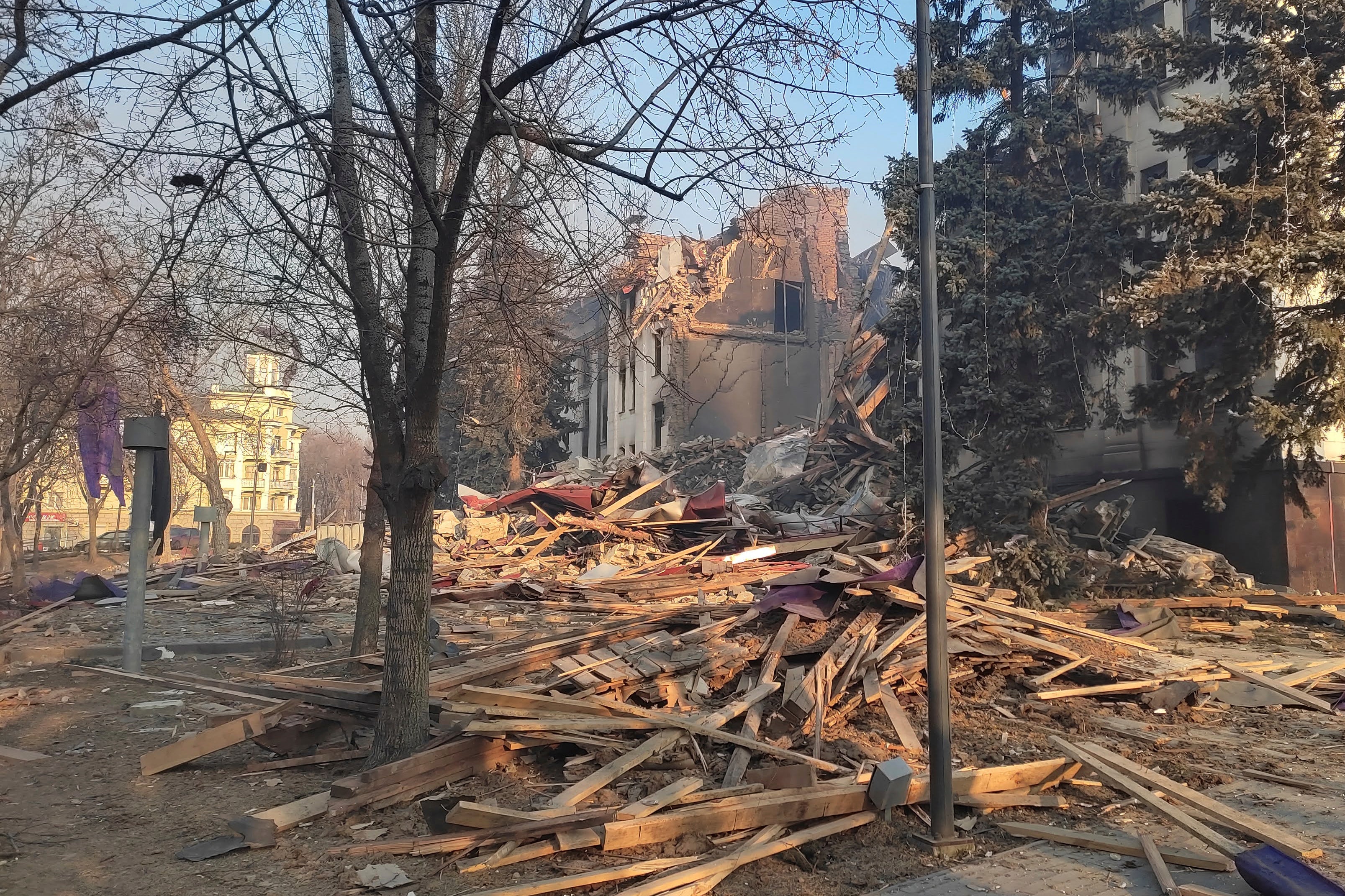
The Russian bombing of a theatre in Mariupol was far deadlier than estimated, killing closer to 600 people inside and outside the building, an investigation has found.
New evidence uncovered by the Associated Press suggests the death toll could be double that cited so far.
The news agency recreated what happened inside the Donetsk Academic Regional Drama Theatre, which had served as the bombarded Ukrainian city’s main bomb shelter for more than a week before being bombed on 16 March 16, from the accounts of 23 survivors, rescuers, and people intimately familiar with the building’s new purpose.
It drew on two sets of floor plans of the venue, photographs and video taken inside before, during and after that day, and feedback from experts who reviewed the methodology. With communications severed, people coming and going constantly and memories blurred by trauma, an exact toll is impossible to determine.
The government estimated early on that around 300 people died and has since opened a war crimes investigation.
Associated Press journalists arrived at a much higher number through the reconstruction of a 3D model of the building reviewed repeatedly by direct witnesses, most from within the theatre, who described in detail where people were sheltering.

All said at least 100 people were at a field kitchen just outside, and none survived.
They also said the rooms and hallways inside the building were packed, with about one person for every three square metres of free space.
Many survivors estimated around 1,000 people were inside at the time of the airstrike, but the most anyone saw escape, including rescuers, was around 200. The survivors primarily left through the main exit or one side entrance; the other side and the back were crushed.
The AP investigation also refutes Russian claims that the theatre was demolished by Ukrainian forces or served as a Ukrainian military base.
None of the witnesses saw Ukrainian soldiers operating inside the building.
And not one person doubted that the theatre was destroyed in a Russian air attack aimed with precision at a civilian target everyone knew was the city’s largest bomb shelter, with children in it.
James Gow, a professor of international security at King’s College London, said documenting what happened at the theatre is critical to establishing a pattern of crimes against humanity in Ukraine.
“This strong witness testimony will be important in establishing that (Russian illegal) conduct was widespread or systematic,” said Mr Gow, who also served as an expert witness at the UN International Criminal Tribunal for the former Yugoslavia.
With Mariupol cut off from access, many fear the bombing of the theatre presages more war crimes that have yet to be discovered.
The theatre stood in a square in the heart of Mariupol for more than 60 years - a stone building with white pillars, a classical frieze, and a distinctive red roof. It was once called the Russian Dramatic Theatre but local authorities removed the word “Russian” from the name in 2015.
The Russian siege of Mariupol started in the first days of March.
Reporting by Associated Press.







